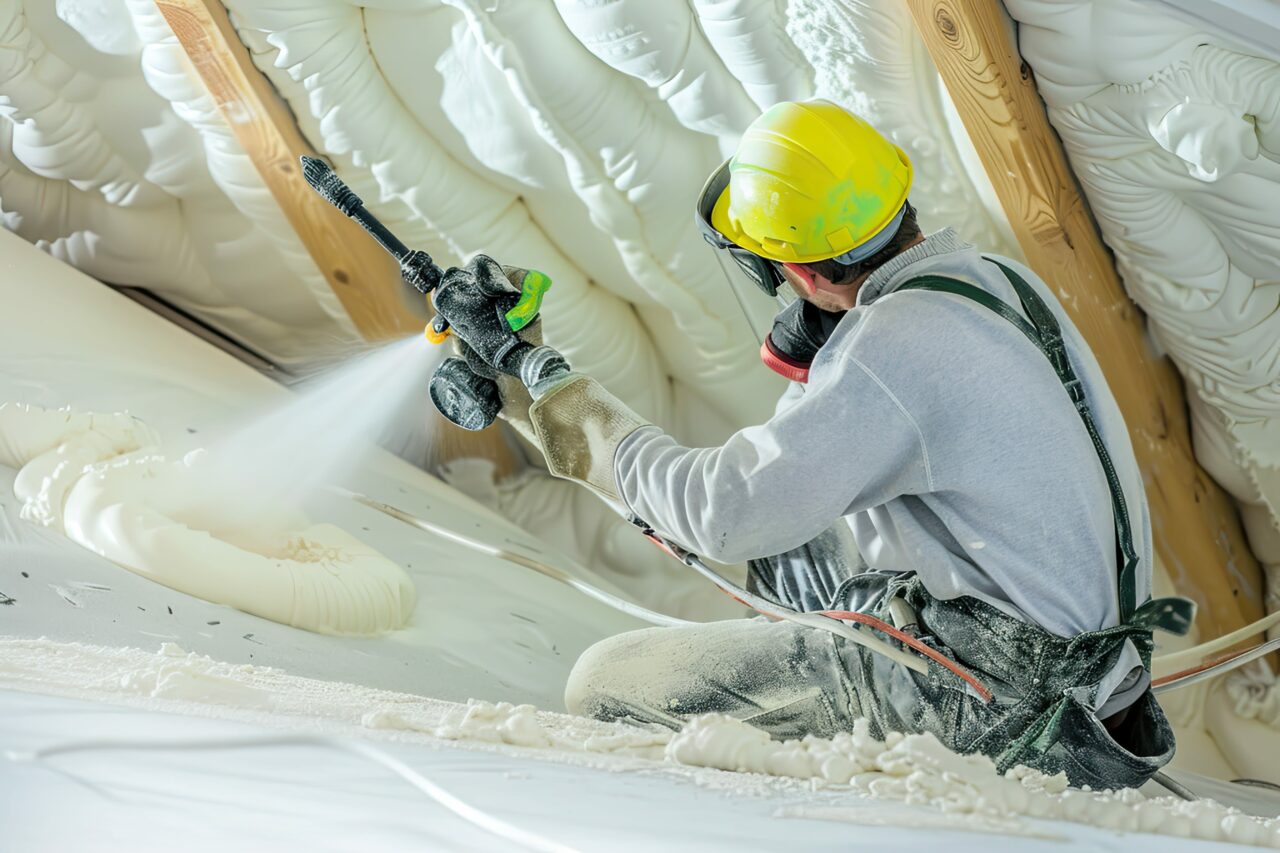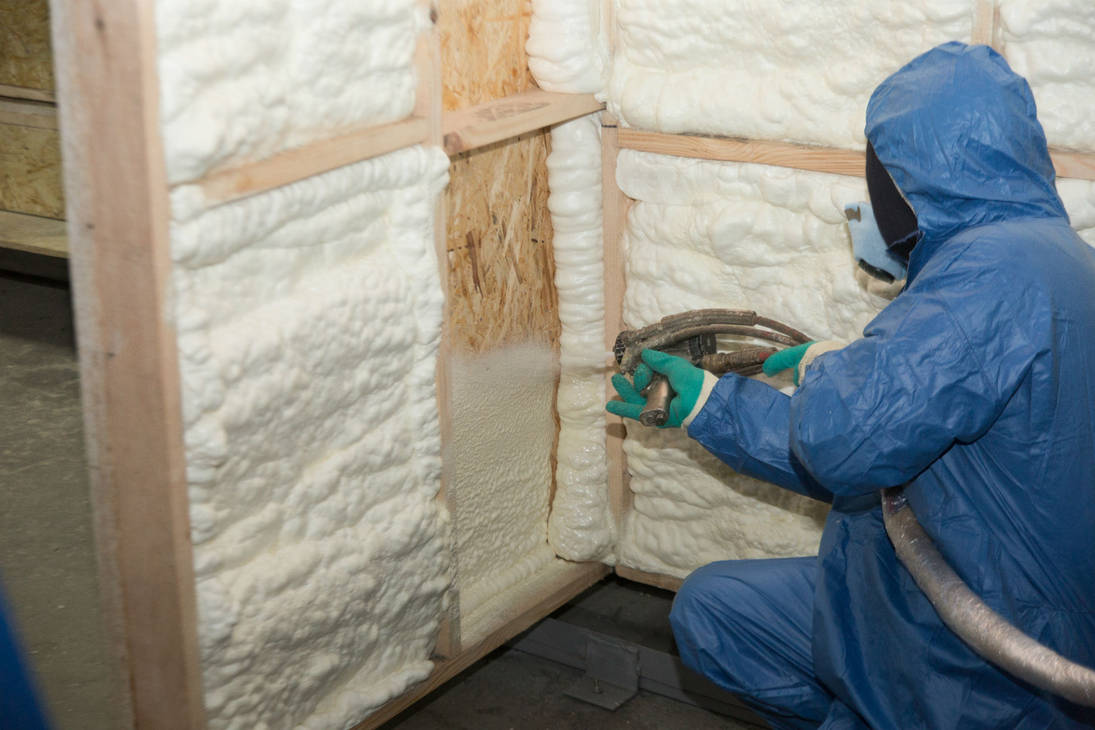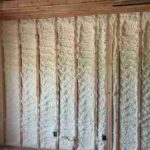
Spray foam insulation is a reliable choice for lasting performance because it is a modern, high-tech material that becomes a permanent, fully integrated part of the home’s structure. Its reliability comes from a unique combination of factors. Once cured, it is a chemically stable and inert polymer that will not break down, settle, or degrade over time. Its powerful adhesive properties ensure that it stays in place, maintaining its full R-value and its critical air seal for the life of the building. Furthermore, a high performance spray foam solution is resilient against the common threats of moisture and pests means that it is not susceptible to the same forms of degradation that can cause traditional insulation materials to fail.
To understand this durability, it helps to look at the specific characteristics that make spray foam such a dependable long-term investment. This guide explores its chemical makeup, its powerful adhesion, and its resilience to common threats, drawing on material science and the hands-on experience of certified insulation professionals.
A Permanent and Stable Material
The primary reason for spray foam’s longevity is its chemical makeup. Once the two liquid components are mixed and have cured, the resulting foam is a type of polyurethane, which is an inert and highly stable plastic.
It Does Not Decompose or Degrade
As a synthetic polymer, spray foam is not subject to the natural decay process that can affect organic insulation materials. It is not a food source for mold, mildew, or bacteria. It does not rot or break down from exposure to the air or the normal temperature and humidity cycles that occur inside a home’s walls or attic. The R-value and air-sealing performance that the foam provides on the day it is installed will be the same performance it provides 50 years down the road.
The Power of Permanent Adhesion
A major factor that distinguishes spray foam from other insulation types is that it does not just sit inside a wall cavity; it becomes a fully integrated part of the structure.
It Stays in Place for the Life of the Home
Spray foam is applied as a liquid that expands and adheres directly and powerfully to the building materials, whether it is wood studs, metal framing, or concrete. This tenacious bond is the key to preventing the most common forms of insulation failure. Unlike fiberglass batts, which can sag and pull away from the framing over time, or loose-fill insulation, which can settle and create uninsulated voids, spray foam stays exactly where it was applied. This ensures that the home’s thermal and air barrier remains complete and continuous, with no gaps or weak spots developing over the decades.
A Resilient Barrier Against Common Threats
A key part of any material’s lifespan is its ability to withstand the common environmental challenges it will face inside a home. This is an area where spray foam, particularly the closed-cell variety, truly excels.
A Waterproof and Vapor-Proof Shield
Moisture is the single biggest threat to the longevity and performance of most insulation materials. When fibrous insulation like fiberglass or cellulose gets wet, it clumps together, loses its R-value, and becomes a breeding ground for mold. Closed-cell spray foam is “hydrophobic,” meaning it repels water, and it is a non-permeable vapor barrier. This means that if a small roof leak occurs, the water will not damage the insulation itself. This resistance to moisture is a critical factor in its long-term durability.
An Inhospitable Barrier to Pests
Rodents and insects can cause a huge amount of damage to traditional insulation, tearing it apart to create nests and contaminating it with their waste. Spray foam is not a food source for pests, and its dense, solid structure makes it very difficult for them to tunnel or burrow through. Just as importantly, because it expands to fill every crack and gap, it seals off the small entry points that pests use to get into the home in the first place. An insulation that is not being physically destroyed by pests is an insulation that will last longer.

Here is a look at the typical lifespan and common failure modes of different insulation types:
| Insulation Type | Typical Lifespan | Common Reasons for Failure or Replacement |
|---|---|---|
| Spray Foam | 80+ years (life of building) | Material itself does not degrade; performance is dependent on correct installation. |
| Fiberglass Batts | 15-30 years | Can be damaged by moisture, pests; can sag and create gaps. |
| Blown-in Cellulose | 20-30 years | Can settle and compact; highly susceptible to moisture damage. |
| Rigid Foam Board | 50+ years | Durable, but the tape used to seal the seams can fail over time. |
The Unique Benefit of Added Structural Strength
Beyond just being a passive insulation material, closed-cell spray foam actively contributes to the home’s structural durability.
Reinforcing the Building Envelope
The rigid nature of closed-cell spray foam, combined with its powerful adhesive properties, can actually add a significant amount of structural strength to a wall or roof assembly. By essentially gluing the studs and sheathing together, it makes the entire structure more resistant to racking forces from high winds.
Things to Consider for a Lasting Installation
The incredible longevity of spray foam is entirely dependent on one factor: the quality of the installation.
- A Professional, Certified Installer is a Must: Spray foam is a chemical product that is manufactured on-site. The installer must be a trained technician who knows how to manage the chemical reaction by controlling the temperatures and pressures of their equipment for long lasting spray foam insulation. A poor installation can lead to a foam that does not perform as advertised and will not have the expected lifespan.
- A Systems Approach to Building: The insulation is part of a larger system. Its lifespan can be affected by the condition of the rest of the home. For example, a professional contractor will always recommend that a homeowner have their roof inspected and in good condition before they insulate the underside of the roof deck.
- Choosing the Right Foam for the Right Place: The two types of spray foam have different properties. A professional knows that the waterproof, vapor-blocking closed-cell foam is the right choice for a moisture-prone area like a crawl space, while the sound-dampening open-cell foam might be used for interior walls. Using the right material in the right application is key to ensuring its longevity.
- Coordination with Other Trades: On new construction projects, a professional installer coordinates with other trades. They ensure all rough-in work for electrical, plumbing, and HVAC systems is complete and inspected before they begin.
Questions People Ask About Durability
Does the R-value of spray foam decrease over time?
For modern, high-quality spray foams, the R-value is very stable. The foam is an inert plastic that does not degrade, so it will maintain its thermal resistance for the life of the building.
Will I ever need to add more insulation later on?
No. Unlike with older insulation that settles, spray foam is a “one-and-done” solution. The performance you get on the day of installation is the performance you can expect for the entire time you own your home.
What happens if the foam gets damaged?
Because it is a solid material, it is very durable. However, if a section were to be damaged during a renovation, for example, a professional can easily cut out the damaged section and seamlessly spray a new layer of foam to repair the area.
How does its lifespan compare to my home’s other components?
Spray foam is one of the most durable products that will be installed in a home. It is designed to last as long as the structural wood framing itself, and it will likely outlast several roofs, HVAC systems, and sets of windows.
Is one type of foam more durable than another?
Both open-cell and closed-cell foam are designed to last for the life of the building. However, because closed-cell foam is waterproof and rigid, it is generally considered to be the more resilient and durable of the two, especially in any area where there is a risk of moisture.
Final Thoughts on a Permanent Solution
Ultimately, spray foam stands apart because it isn’t just placed within a home; it becomes a permanent part of it. By forming a solid, seamless barrier that resists degradation, moisture, and pests, it addresses the common failure points of traditional insulation. For homeowners seeking a lasting solution to comfort and energy efficiency, this makes it one of the most dependable investments for the long-term health of their property.
Get a Professional Assessment for a Long-Term Upgrade
To learn more about how a permanent spray foam insulation system can benefit your home, the best first step is a professional evaluation. An experienced insulation contractor can provide a clear plan based on your home’s specific needs. For homeowners in the Chicago area, the team at South Chicago Insulation has deep expertise in designing and installing long-lasting insulation systems. They can be reached for a consultation by email at ask@southchicagoinsulation.com or by phone at (779) 803-8025.
Author: Bob Gasca attended his first spray foam training in 2007 and has continued to pursue yearly training to stay current with the latest technology and practices. He is a certified Spray Foam Master Installer through the SPFA and a member of the SPFA. Additionally, Bob serves as a Spray Foam Worldwide Ambassador, sharing information with spray foam professionals globally. Recently, he returned from a building science training, where he expanded his knowledge on how weather conditions affect home performance, helping him better diagnose and improve home health for families. Bob specializes in finding solutions to complex moisture and air infiltration issues.
Reviewer: Noah Gonzalez reviewed this article and drew on 9 years of experience to offer suggestions that make the guidance more directly useful for insulation contractors.


